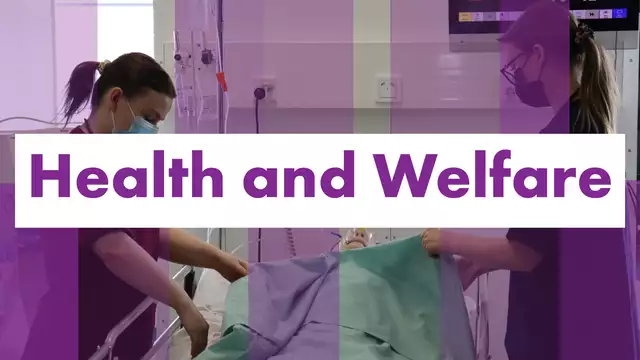
The 18th Scandinavian Conference on Health Informatics (SHI 2022) was organized in Tromsø, at the UiT – The Arctic University of Norway, from August 22nd to 24th 2022. The conference serves, and has served for almost two decades, as a forum for interdisciplinary research and researchers within the field of health informatics and digital health / e-health in the Nordic countries and provides opportunities to share experiences as well as promote collaboration and networking. The conference themes consisted of Health Information Systems and central components, Human Factors in Health Informatics design, eHealth & mHealth Solutions, Citizen-centric Health Informatics, Security, Privacy, and Ethics, AI and ML in eHealth applications and services. Arcada University of Applied Sciences was represented at the conference with two papers.
Thomas Hellstén and Jonny Karlsson (co-authored with Christian Häggblom and Jyrki Kettunen) presented their paper, Towards Accurate Computer Vision-Based Marker Less Human Joint Localization for Rehabilitation Purposes, within the Health Information Systems and central components theme. The study by Hellstén et al. (2022) investigated if computer vision can provide acceptable measurement accuracy in the field of rehabilitation. The authors concluded that sufficient accuracy can potentially be achieved, but technical improvements need to be done in the underlying dataset before this kind of health technology can be used in rehabilitation purpose. The subtopics for the Health Information Systems and central components theme were system/solution/information architectures, evaluation of services, processes, and solutions, EHR/MHR/EPJ/PHR systems as well as standardization in health information systems and applications.
Jonas Tana presented the paper A temporal analysis of depression related tweets – a case study in Finland (co-authored with Bao Cai and Leonardo Espinosa-Leal) within the AI and ML in eHealth applications and services theme. The infodemiological study by Tana et al. (2022) utilized data from Twitter to identify temporal patterns of online health behaviors related to depression in Finland, a first of its kind with this geographical setting. The results in the study were somewhat contradictory to previous findings in similar infodemiology studies, which again emphasizes the old cliché “more research is needed”. However, the importance of this kind of research to gain deeper understanding of online health behaviors was recognized at the conference, and more research within the field was encouraged. The other subtopics for the AI and ML in eHealth applications and services theme were big health data, data analytics, decision support solutions as well as modelling and standardization.
Within these two themes, Health Information Systems and central components and AI and ML in eHealth applications and services, there were many interesting presentations. For instance, Bender et al (2022) presented their work regarding assessing the use of telemedicine among people with diabetes and the Danish translation and cross-cultural adaptation of the Telemedicine Usability Questionnaire (TUQ). The need for a reliable tool to assess patients’ perceptions after using a telemedicine service has not only been a challenge in Denmark, but in Finland as well, so the results from Denmark can be seen as encouraging, as it has become evident that telemedicine services will be an integral part of healthcare services in the future. A common consensus at the conference was that the COVID- 19 pandemic has required healthcare organizations to implement telemedicine as part of the professionals’ daily practice, and that there is a need to asses patients’ perceptions of these measures, so that the development in this area can continue on the right track.
Anders Nordahl-Hansen presented the paper Normativity assumptions in the design and application of social robots for autistic children (Skaug Sætra et al., 2022), a beginning of a framework for ethical considerations in the application of social robots, and more specifically in the idea of normativity in both the design and use of such robots to portray or mimic what is normal and to identify deviant behavior or development. The authors conclude that social robots are not exempt from portraying and reinforcing social constructs, as they manifest a certain normativity, and it would therefore be important to implement a diversity perspective in the design and use of social robots.
Elia Gabarron presented a scoping review with the title Social media, physical activity and autism: better or bitter together? (Gabarron et al., 2022) in which the authors had studied the link between social media, physical activity, and autism. The authors argue that even if technology usage is related to an increase in sedentary time, physical activity interventions delivered through social media can provide some benefits and function as successful sources of motivation. Social media can be used to send reminders and represent powerful environments of social support through interaction with others which can be helpful to take action and engage in physical activity.
Falko Schmid presented an augmented reality surgical aid, that displays alphanumerical data into the loupe of surgical magnifying glasses, specially designed for cardiac surgeons. The authors presented promising data on prototype testing, as the results showed a decrease of missed critical phases and improved response times when using the demonstrator instead of a customary monitor for tracking intraoperative parameters (Liebrecht et al. 2022).
Other presentations included an augmented reality app for encouraging outdoor physical activity for people with intellectual disabilities (Stellander et al. 2022), a wearable device, or activity tracker, utilizing data collection and smart nudging to promote physical activity and a healthy lifestyle (Dhanasekaran et al. 2022) and a really interesting architectural framework for prenatal care using non-invasive, simple, and low-cost internet of things (IoT) monitoring system for self-imperative care (Ghimire et al., 2022).
This is of course only a scratch in the surface of the conference, and all Proceedings of the 18th Scandinavian Conference on Health Informatics are published online, as open access. We recommend that you read the papers, available at: https://ecp.ep.liu.se/index.php/shi
As a summary the conference showed that the state of health informatics (research) is strong in the Nordic countries. Even if there are similar challenges in all countries, i.e. a relatively low priority in the different curriculums as well as difficulties attracting students, especially from engineering disciplines, to health informatics studies, the strong cross-border collaboration within the Nordic countries is set to guarantee a successful development within the field.
View of Tromsö. © Jonas Tana
We, the authors, would like to thank the Department of Computer Science at UiT The Arctic University of Norway for organizing such a great and inspiring conference in the beautiful city of Tromsö.
Jonas Tana, Ph.D., senior lecturer
Thomas Hellsten, doctoral student, senior lecturer
Jonny Karlsson, Ph.D., senior lecturer
References:
Bender, C., Germund Nielsen, M., Hejlesen, O., Hangaard, S. (2022). Assessing the use of telemedicine among people with diabetes: A Danish translation and cross-cultural adaptation of the Telemedicine Usability Questionnaire. In Proceedings of the 18th Scandinavian Conference on Health Informatics, 14-20.
Dhanasekaran, S., Andersen, A., Karlsen, R., Håkansson, A., & Henriksen, A. (2022). Data collection and smart nudging to promote physical activity and a healthy lifestyle using wearable devices. In Proceedings of the 18th Scandinavian Conference on Health Informatics, 154-158.
Gabarron, E., Henriksen, A. & Nordahl-Hansen, A. (2022). Social media, physical activity and autism: better or bitter together? A scoping review. In Proceedings of the 18th Scandinavian Conference on Health Informatics, 111-117.
Ghimire, S., Martine, S., & Gerdes, M. (2022). Self-imperative Care of Pregnancy using IoT Solutions. In Proceedings of the 18th Scandinavian Conference on Health Informatics (pp. 64-68).
Hellstén, T., Karlsson, J., Häggblom, C., & Kettunen, J. (2022). Towards Accurate Computer Vision-Based Marker Less Human Joint Localization for Rehabilitation Purposes. In Proceedings of the 18th Scandinavian Conference on Health Informatics, 21-25
Liebrecht, A., Bibo, R., Dewitz, B., Kalkhoff, S., Moazemi, S., Rollinger, M., … & Schmid, F. (2022). ARMAGNI: Augmented Reality Enhanced Surgical Magnifying Glasses. In Proceedings of the 18th Scandinavian Conference on Health Informatics, 46-51.
Skaug Sætra, H., Nordahl-Hansen, A., Fosch-Villaronga, E., Dahl, C. (2022). Normativity assumptions in the design and application of social robots for autistic children. In Proceedings of the 18th Scandinavian Conference on Health Informatics, 136-140.
Stellander, M., Henriksen, A., Michalsen, H., Anke, A., Ursin, D., Martinez, S., … & Hartvigsen, G. (2022). Sorterius-An augmented reality app for encouraging outdoor physical activity for people with intellectual disabilities. In Proceedings of the 18th Scandinavian Conference on Health Informatics, 88-91.
Tana, J., Cai, B., Espinosa- Leal, L. (2022). A temporal analysis of depression related tweets-a case study in Finland. In Proceedings of the 18th Scandinavian Conference on Health Informatics , 147-153.


